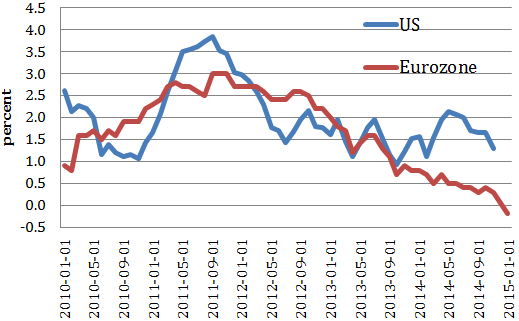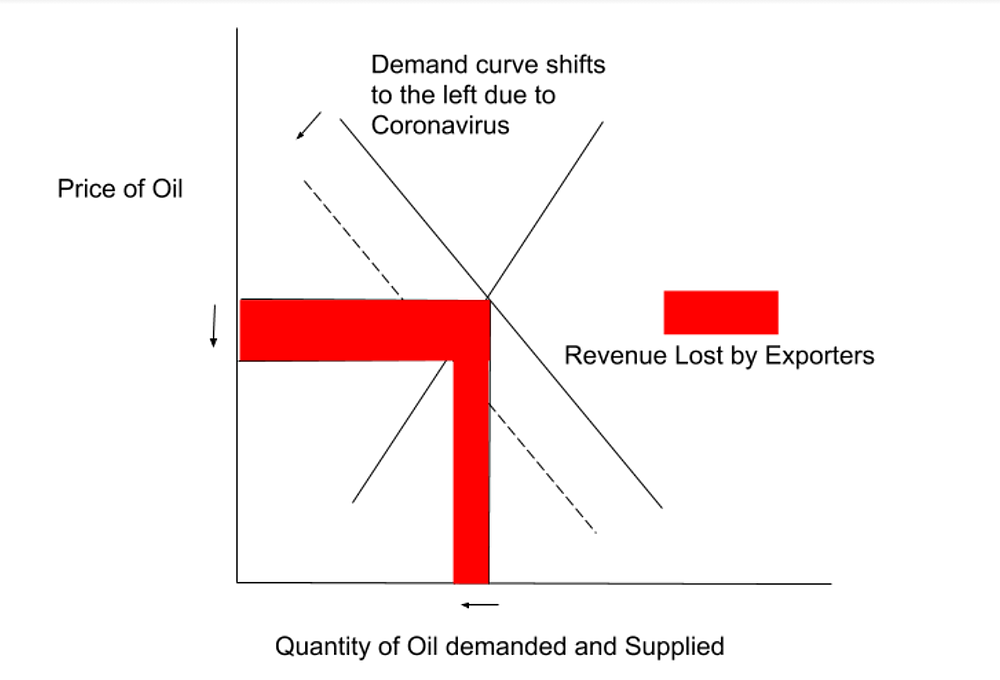What is a Periodic Inventory System? Definition Meaning Example
Contents:


The system also tracks all information pertinent to the product, such as its physical dimensions and its storage location. Periodic inventory works for businesses that don’t need to accurately know current inventory levels on a daily basis. Growing businesses and larger businesses need more detailed inventory tracking and typically choose a perpetual inventory system, which is best managed using an ERP inventory module. Periodic inventory is an accounting inventory method where inventory and cost of goods sold are calculated at the end of an accounting period rather than on a daily basis. There are advantages and disadvantages to both the perpetual and periodic inventory systems.
Track of inventory is not updated in real-time; therefore, businesses may not know the status of their stocks when they need to. Demand forecasting might not be as accurate as compared with the perpetual inventory system leading to stock-outs or overstocking. While theft, shrinkage could be detected in the perpetual inventory system, it is not so in the periodic inventory system.
Key Takeaways from the Smart Manufacturing Software Buyer’s Guide
The Cost of Goods Sold is the cumulative total of direct costs incurred for the goods or services sold, including direct expenses like raw material, direct labour cost and other direct costs. Periodic inventory system is usually used by companies that buy and sell a wide variety of inexpensive products. Grow your sales, market your business, manage your inventory and a lot more with ZapInventory. Also, you must read about the Perpetual Inventory System and its benefits over the periodic inventory system.
- Under the perpetual system, there are continual updates to the cost of goods sold account as each sale is made.
- The term inventory refers to the raw materials or finished goods that companies have on hand and available for sale.
- Keep a budget of expected gross margin each period to compare with the actual margin.
- In other words, the cost of what they sell is the same as what they most recently paid for that inventory.
- The term periodic inventory system refers to a method of inventory valuation for financial reporting purposes in which a physical count of the inventory is performed at specific intervals.
- Despite its simplicity and ease of use, the periodic inventory system also comes with some disadvantages.
In a perpetual LIFO system, the company also uses the running ledger tally for purchases and sales, but they sell the inventory that they last purchased before moving to older inventory. In other words, the cost of what they sell is the same as what they most recently paid for that inventory. See the same activities from the FIFO card above in the LIFO card below. To make good business decisions, most business owners and managers need updated information on a very regular basis. Most large businesses update inventory automatically with each sale or shipment.
What Is Periodic Inventory?
Inventory that is only managed on the cloud can more easily disappear and end up being sold out of the back of a truck somewhere. Deploying a periodic inventory system can prove advantageous, especially for smaller companies. It’s undoubtedly cheaper to implement and maintain than a perpetual inventory system, and because of its simplicity, it doesn’t require extensive employee training.
Our custom OMS can help in tasks such as automatic tracking and updating of inventory in real-time, across fulfillment centers and selling platforms, inventory management and a wide range of other services. Thanks to the perpetual system, you will always have access to precise COGS numbers. However, with the systematic approach, you would have to wait until the physical count was done to obtain the exact COGS during an accounting period. Companies that lack the resources or do not want to spend a lot of money on implementing a more intricate inventory accounting system are also advised to use the system. It could be the most incredible option for new businesses, especially those with substantial inventory made up primarily of inexpensive commodities.
Under the perpetual system, managers are able to make the appropriate timing of purchases with a clear knowledge of the number of goods on hand at various locations. Having more accurate tracking of inventory levels also provides a better way of monitoring problems such as theft. At a grocery store using the perpetual inventory system, when products with barcodes are swiped and paid for, the system automatically updates inventory levels in a database.
Century 21 Accounting: General Journal
Cost of goods sold is increased, and inventory is decreased the instant that inventory is sold. Learn the differences and similarities between the periodic and perpetual inventory methods, and use this guide to help choose which system to use for your business. With a perpetual inventory management system, you can pinpoint an exact cost of goods sold for each item you sell—getting a clearer picture of where your business stands.

Kristina is the Director of Marketing Communications at ShipBob, where she writes various articles, case studies, and other resources to help ecommerce brands grow their business. Days payable outstanding is a ratio used to figure out how long it takes a company, on average, to pay its bills and invoices. The Structured Query Language comprises several different data types that allow it to store different types of information…
Periodic inventory can be sufficient for a firm handling fewer goods, but it may be too basic for businesses with significant or changing sales volumes. Businesses frequently mix the two accounting techniques to manage inventory. The simplicity of periodic inventory systems is prized, and all that’s required to physically count your beginning inventory at specific periods throughout the year is a little time. As a result, a periodic inventory technique may be adopted without much inventory planning or preparation because it doesn’t need complex calculations or accounting records. With successive journal entries, all other entries are connected to the accounts for purchases and payables.
Perpetual vs. Periodic Inventory: What’s the Difference? – The Motley Fool
Perpetual vs. Periodic Inventory: What’s the Difference?.
Posted: Fri, 05 Aug 2022 07:00:00 GMT [source]
Your Guide to Starting a Business The tools and resources you need to get your new business idea off the ground. The perpetual system might require you to either extensively train your employees or employ a bunch of tech-savvy employees who have experience with the system. The periodic system is credited for its simplicity and would therefore not require any extra training on the part of the employees.
Let us talk about periodic inventory systems and how they might aid with inventory control. For the periodic inventory method, there’s no need to continually record the inventory levels. Only the beginning and ending balances are needed, often completed by a physical count to calculate inventory value. Because updates are so infrequent in a periodic inventory system, no effort is made to keep real-time records of customer sales, inventory purchases, and the cost of goods sold.
In other words, the california income tax rate attaches the actual cost to each unit of its products. This is simple when the products are large items, such as cars or luxury technology goods, because the company must give each unit a unique identification number or tag. In a periodic inventory system, you update the inventory balance once a period. You can assume that both the sales and the purchases are on credit and that you are using the gross profit to record discounts. One other key difference between the two systems is the accounts you use.
A periodic inventory system measures the inventory levels periodically through physical counts. The perpetual method continuously updates inventory records after each sale or purchase, monitoring the inventory balance. Small business owners with less inventory benefit more from periodic systems than larger merchants.
Inventory monitoring system proposed for Kerala police to limit spending to real requirements – The New Indian Express
Inventory monitoring system proposed for Kerala police to limit spending to real requirements.
Posted: Sun, 26 Mar 2023 07:00:00 GMT [source]
For example, in a periodic system, when you receive a new pallet of goods, you may not count them and enter them into stock until the next physical count. In a perpetual system, you immediately enter the new pallet in the software so the system can track its life in your business. When there is a loss, theft or breakage, you should also immediately record these updates. Any business can use a periodic system since there’s no need for additional equipment or coding to operate it, and therefore it costs less to implement and maintain. Further, you can train staff to provide simple inventory counts when time is limited or you have high staff turnover. They can quickly count the goods they are working with, whereas a perpetual system, which provides a more accurate inventory, requires training staff on electronic scanners and data entry.
In this example, we also say that the physical inventory counted 590 units of their product at the end of the period, or Jan. 31. In general, we recommend using a periodic inventory management system if you’re trying to track your inventory by hand. It requires less work for manual tracking, but it does make it harder to accurately allocate costs to the items you’ve sold. For that reason, we advise using a periodic system only if your business is small with low inventory levels, low product turnover, and a limited number of sellable products to track. Periodic inventory taking is the physical count of inventory that takes place on a periodic schedule when using a periodic inventory method. Even businesses using perpetual inventory may want to take a physical inventory count periodically to account for shrinkage .
Businesses with large inventory need to deploy manpower and devote time to conduct the physical count of inventory each time. That said, we think inventory software and item-scanning equipment are well worth the cost. First, it can be a heavy lift for businesses trying to do their inventory tracking manually. Given the information we’ve covered up to this point, it’s clear that periodic systems are best suited to small businesses or companies that provide high-end products with a low on-hand inventory. Moreover, they’re an excellent option for companies that aren’t looking to expand their inventory in the future.

The only https://1investing.in/ a period inventory system is truly up to date is at the end of an accounting period. Although a period system saves input time, it can actually cost the company money. The key difference between periodic and perpetual inventory management comes down to how often you take stock of your inventory levels. That may seem like an inconsequential decision, but it can have a significant impact on the accuracy and ease of your inventory tracking system.

Periodic and perpetual inventory systems are different accounting methods for tracking inventory, although they can work in concert. Overall, the perpetual inventory system is superior because it tracks all data and transactions. However, with a perpetual system, you need to make more decisions to use it successfully. The periodic inventory system does not update the main inventory account directly. It means with changing inventory levels, and the business may not be able to calculate the accurate cost of goods sold. Once the physical inventory count is performed, the company will calculate the cost of goods sold.
After a physical inventory count, the company determines the value of its inventory is $400,000 on March 31. COGS for the first quarter of the year is $350,000 ($500,000 beginning + $250,000 purchases – $400,000 ending). It does not yield any information about the cost of goods sold or ending inventory balances during interim periods when there has been no physical inventory count. Periodic inventory systems are best for smaller businesses with just a few products to track. As businesses grow and track more unique SKUs, periodic inventory systems become less viable. The gross profit method is an estimate of the ending inventory in the period.